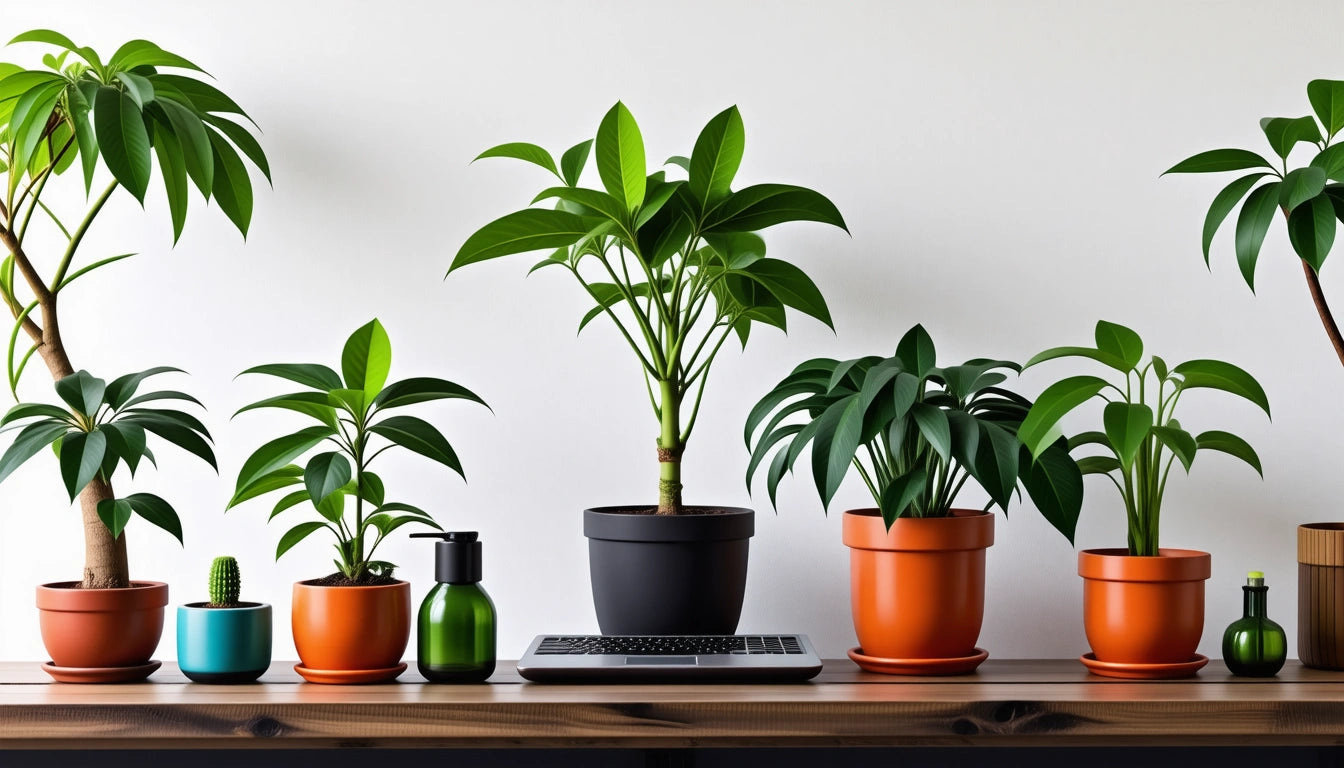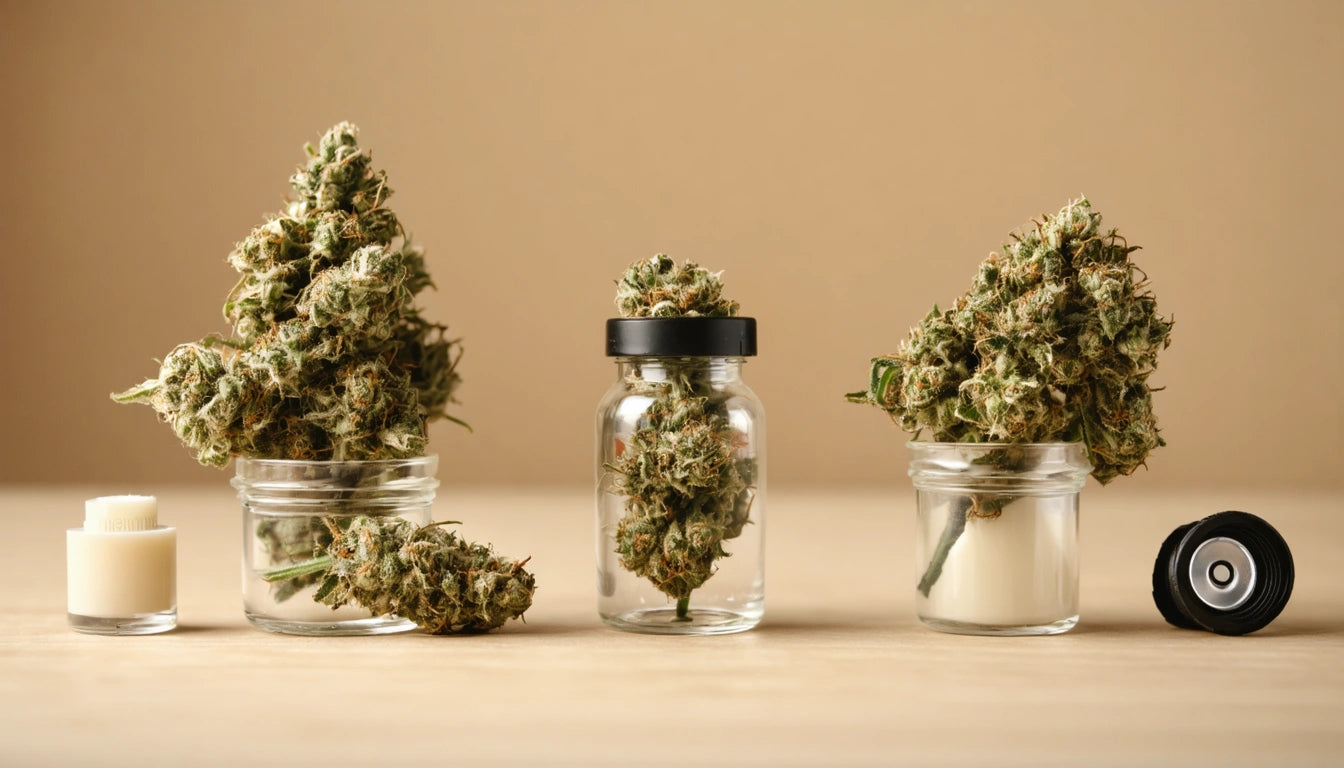Table of Contents
How to Determine the Right Time to Harvest Your Weed
Knowing when to harvest your cannabis plants is crucial for achieving optimal potency, flavor, and effects. Harvest too early, and you'll miss out on potency and yield. Harvest too late, and the THC may degrade, resulting in less desirable effects. This guide will help you recognize the signs that indicate your cannabis is ready for harvest.
Visual Indicators: What Your Plants Are Telling You
When determining how to know when weed is ready to harvest, several visual cues can guide your decision. As cannabis plants mature, they display noticeable changes that signal readiness.
Leaf Changes
Mature plants often show yellowing of fan leaves as they redirect energy to bud development. This natural process, called senescence, is a helpful indicator that harvest time is approaching. However, this alone isn't enough to determine readiness.
Bud Appearance
Ready-to-harvest buds appear dense and slightly swollen. The flowers stop producing new white pistils, and the calyxes swell as resin production peaks. According to experienced cultivators, buds should feel slightly sticky but not wet when gently squeezed.
Trichome Examination: The Most Reliable Method
Trichomes are tiny, mushroom-shaped glands that produce cannabinoids and terpenes. Their appearance provides the most accurate indication of harvest readiness.
Tools Needed
To properly examine trichomes, you'll need magnification. Options include:
- Jeweler's loupe (30-60x magnification)
- Digital microscope
- Smartphone macro lens attachment
These tools allow you to see the trichome heads clearly, which is impossible with the naked eye.
Color Changes
Trichomes progress through three main stages:
- Clear: Immature, low potency
- Cloudy/Milky: Peak THC content, energetic effects
- Amber: THC degrading to CBN, more sedative effects
For balanced effects, most growers harvest when trichomes are approximately 70-80% cloudy and 20-30% amber. For more energetic effects, harvest when most trichomes are cloudy but before they turn amber. For more sedative effects, wait until more trichomes have turned amber.
When preparing for harvest, having the right processing and filling equipment ready will streamline your post-harvest workflow and help preserve trichome integrity during handling.
Pistil Observation: Color Changes and Maturity
Pistils are the hair-like structures that protrude from the buds. Initially white, they darken and curl inward as the plant matures.
Pistil Color Progression
When trying to determine how to tell if weed is ready to harvest, pistil coloration offers valuable insights:
- Early flowering: Mostly white pistils
- Mid-flowering: 50-70% darkened pistils
- Harvest window: 70-90% darkened and curled pistils
- Late harvest: Nearly all pistils darkened
As research on optimal potency indicates, harvesting when 70-80% of pistils have darkened often provides the best balance of THC and terpene content.
Timeline Considerations: Strain-Specific Harvest Windows
Different cannabis varieties have unique flowering periods that influence when they're ready to harvest.
Indica vs. Sativa Timeframes
Generally, indica-dominant strains have shorter flowering periods (7-9 weeks) compared to sativa-dominant varieties (10-12+ weeks). Hybrid strains typically fall somewhere in between, depending on their genetic makeup.
Breeder Guidelines
Seed breeders usually provide estimated flowering times for their strains. While these serve as useful guidelines, environmental factors and phenotype variations can affect actual harvest timing. It's best to treat these timeframes as a starting point rather than a strict schedule.
According to recent research, harvesting at specific times of day can also impact cannabinoid levels, with early morning harvests potentially offering higher terpene concentrations.
Environmental Factors That Affect Harvest Timing
External conditions can influence how quickly your plants mature and when they're ready to harvest.
Light Cycles
Photoperiod cannabis plants respond to light cycle changes. Any disruption or light leaks during the dark period can delay maturation and confuse harvest indicators.
Temperature and Humidity
Cooler temperatures during late flowering can extend the maturation period but may enhance terpene production and color development. Conversely, high temperatures can accelerate maturation, sometimes prematurely.
As outlined in comprehensive harvesting guides, maintaining proper environmental conditions throughout the flowering stage ensures that visual harvest indicators develop properly.
Harvesting Techniques for Maximum Potency
Once you've determined that your plants are ready, proper harvesting techniques help preserve potency and quality.
Staggered Harvesting
Rather than harvesting the entire plant at once, consider a staggered approach. Upper buds typically mature faster than lower buds due to light exposure differences. Harvesting in stages allows each section to reach optimal maturity.
Time of Day Considerations
Many experienced growers prefer harvesting in the early morning when terpene concentrations are highest. This timing can enhance the flavor and aroma profile of your final product.
Knowing how to tell when to harvest weed is both an art and a science. By combining visual indicators, trichome examination, and knowledge of your specific strain, you'll develop the confidence to harvest at the perfect moment for your desired effects and potency.











Leave a comment
All comments are moderated before being published.
This site is protected by hCaptcha and the hCaptcha Privacy Policy and Terms of Service apply.